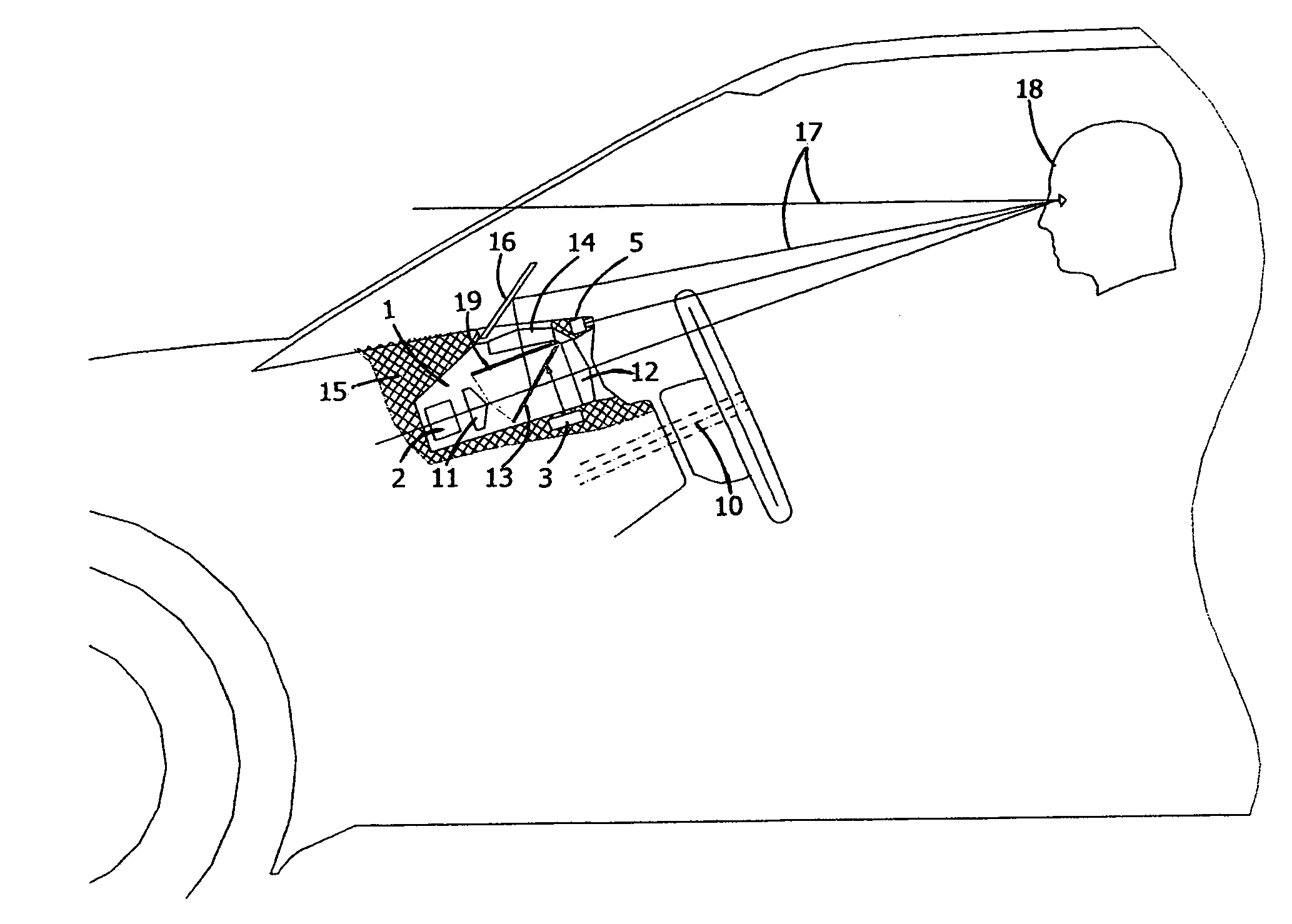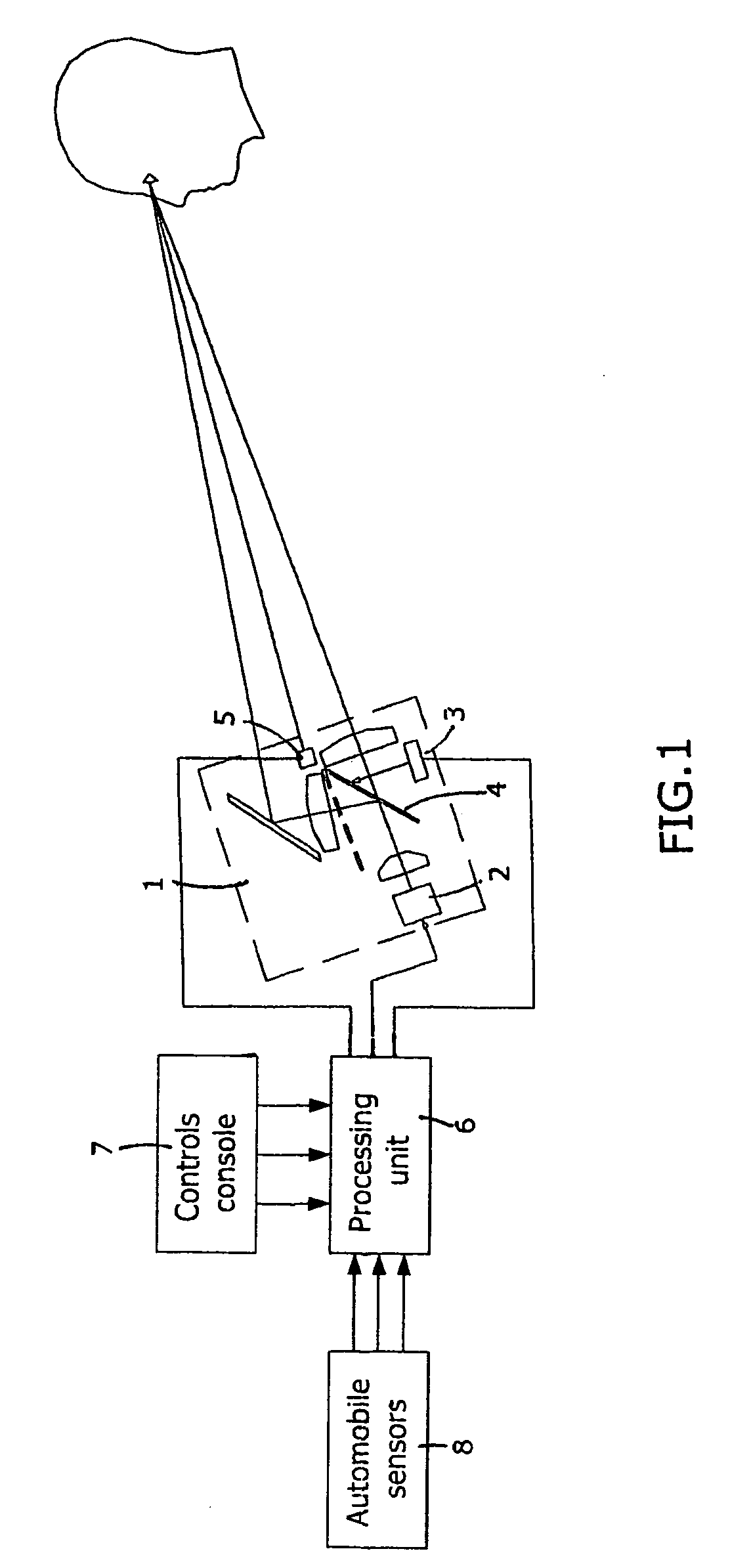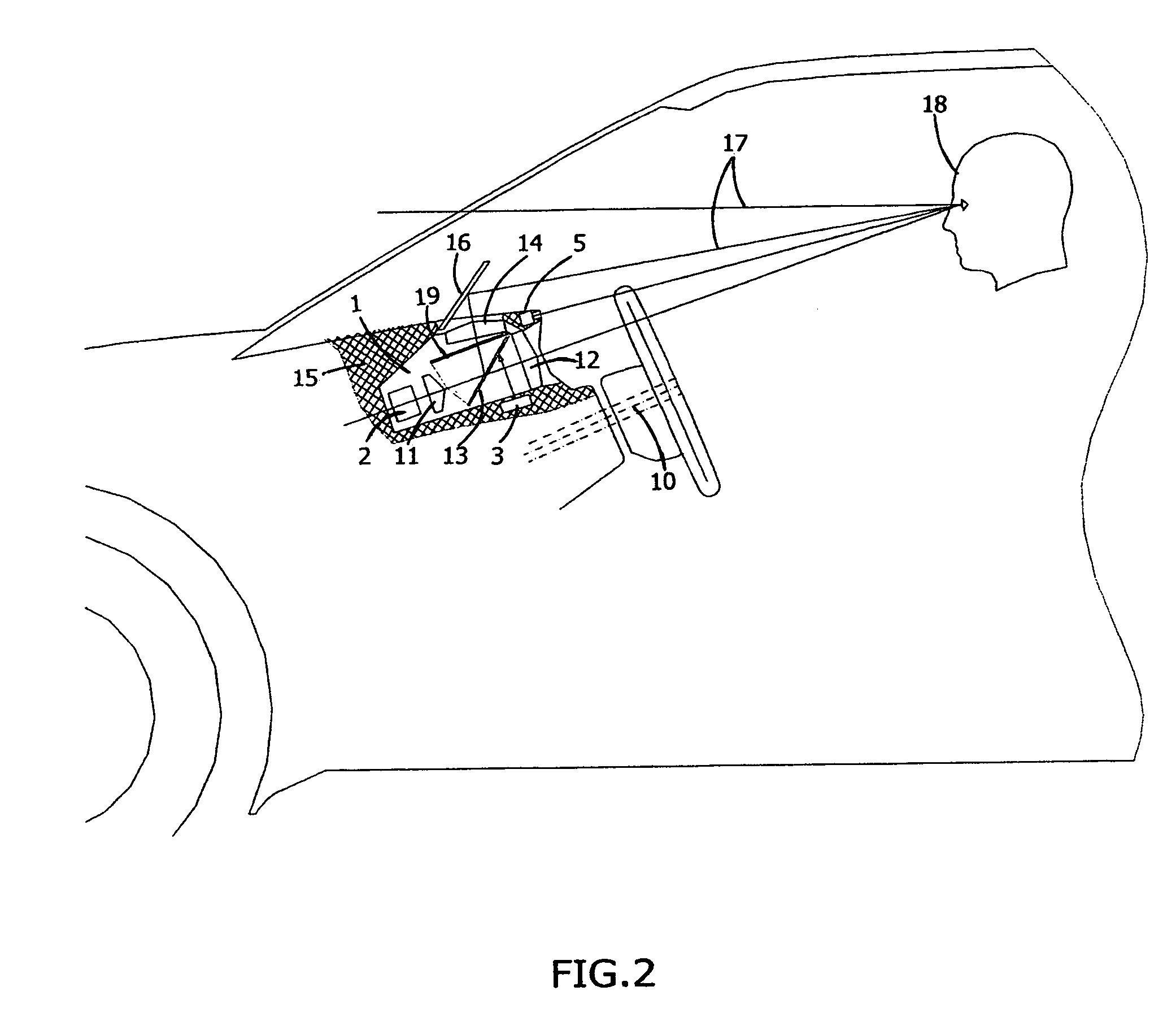Multifunctional collimator indicator
a collimator indicator and multi-functional technology, applied in the direction of static indicating devices, navigation instruments, instruments, etc., can solve the problems of difficulty in obtaining quality and timely readings, difficult conditions for obtaining quality readings, severe handicaps one's judgment, etc., and achieve the effect of facilitating chang
- Summary
- Abstract
- Description
- Claims
- Application Information
AI Technical Summary
Benefits of technology
Problems solved by technology
Method used
Image
Examples
Embodiment Construction
[0038]FIG. 1 shows a structural diagram of the vehicular multifunctional collimator indicator. It consists of the indication unit 1, which contains the image formulator 2, additional elements of the optical system, servo 3, rotating mirror 4, and the viewing direction sensor 5, the last being an integral part of the system responsible for determining the direction of the driver's view. The indicator also consists of a processing unit 6, and the controls console 7 that can be positioned nearby the indication unit or elsewhere as independently constructed modules. Some inlets of the processing unit 6 are connected with the automobile sensors 8, and other inlets of the processing unit 6 are connected with the controls console 7 and the viewing direction sensor 5. The outlets of the processing unit 6, are connected with the image formulator 2 and servo 3.
[0039]FIG. 2 shows a constructive diagram of the indication unit 1, which is placed inside of a vehicle 9 in place of the traditional ...
PUM
 Login to View More
Login to View More Abstract
Description
Claims
Application Information
 Login to View More
Login to View More - R&D
- Intellectual Property
- Life Sciences
- Materials
- Tech Scout
- Unparalleled Data Quality
- Higher Quality Content
- 60% Fewer Hallucinations
Browse by: Latest US Patents, China's latest patents, Technical Efficacy Thesaurus, Application Domain, Technology Topic, Popular Technical Reports.
© 2025 PatSnap. All rights reserved.Legal|Privacy policy|Modern Slavery Act Transparency Statement|Sitemap|About US| Contact US: help@patsnap.com



